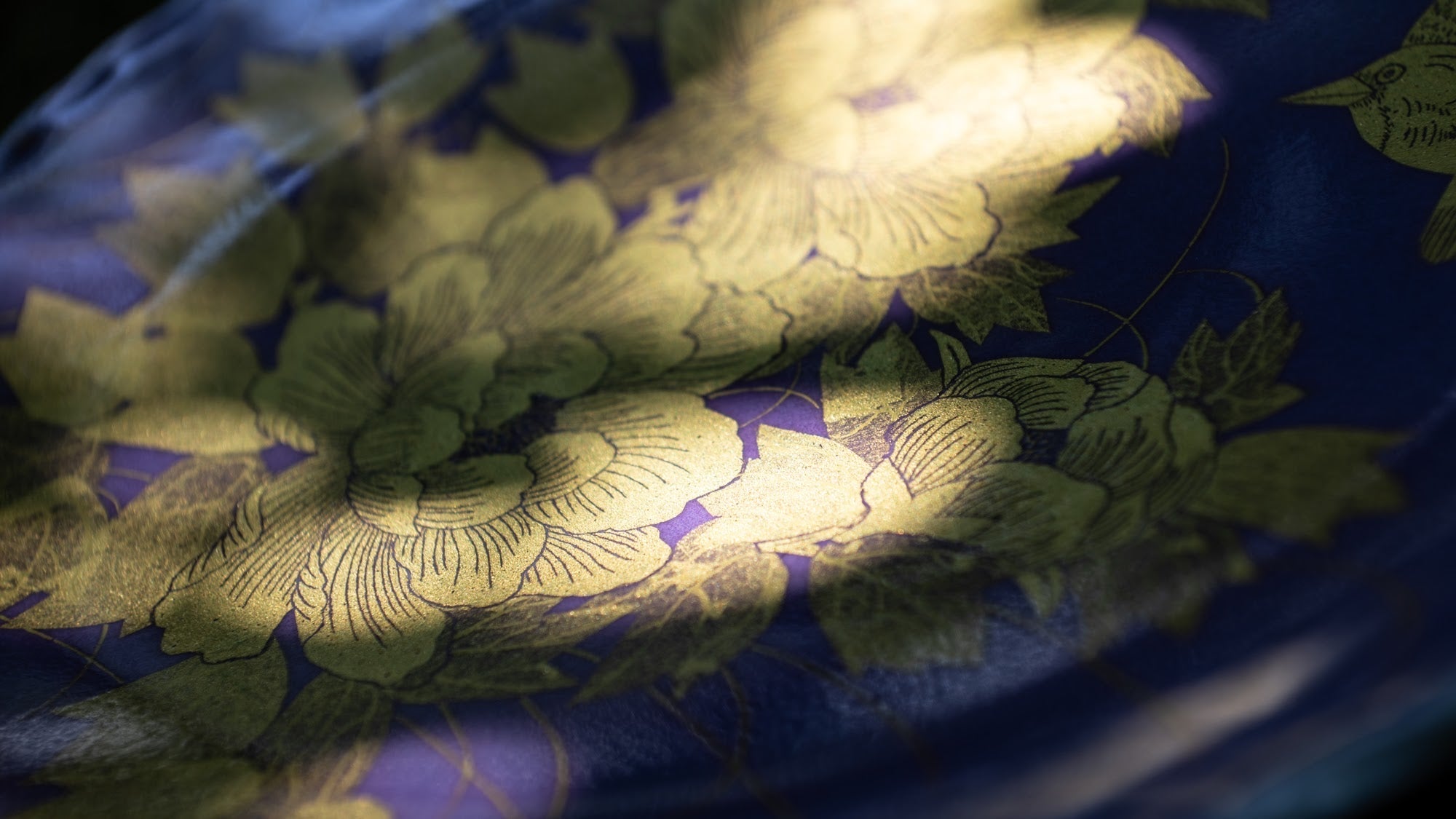
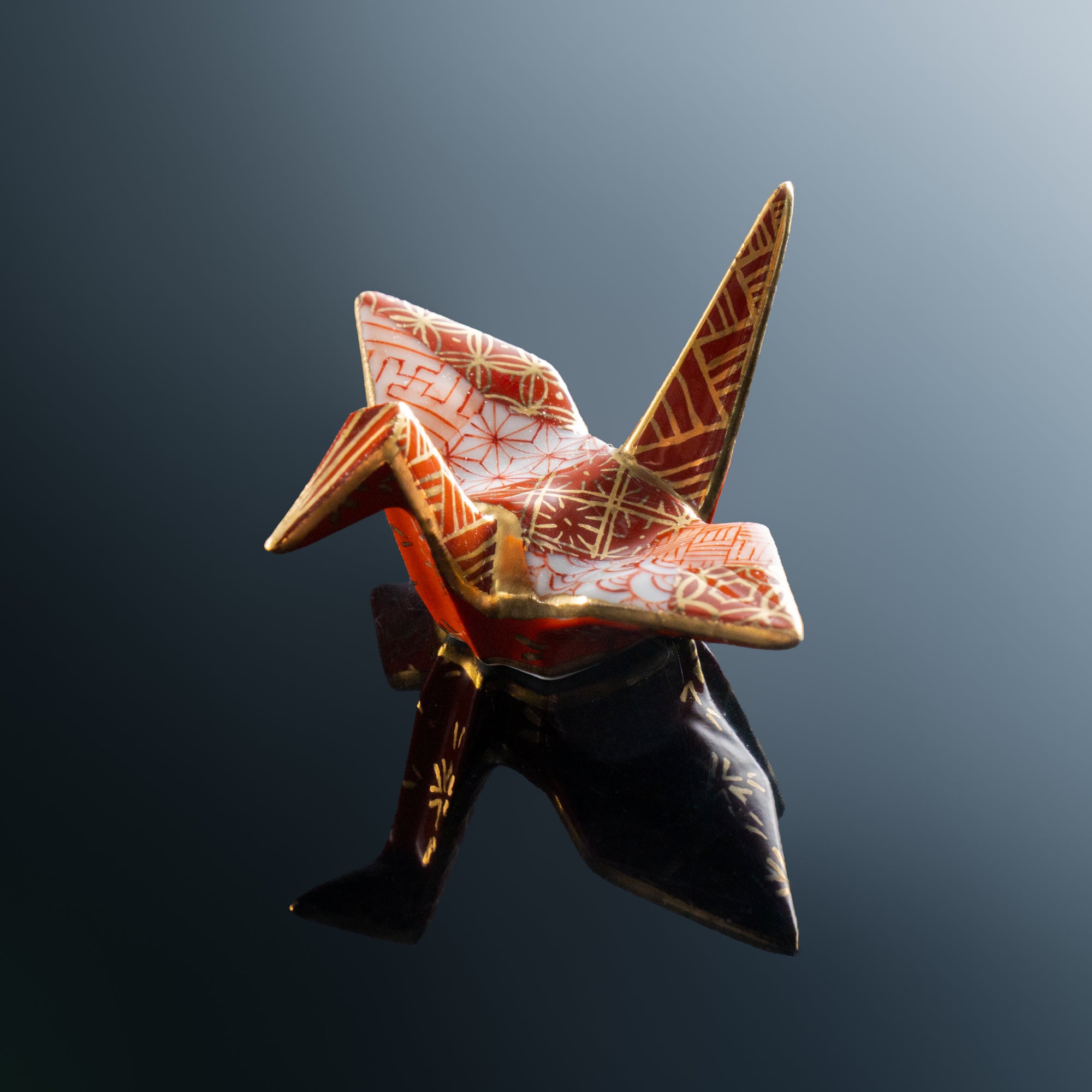

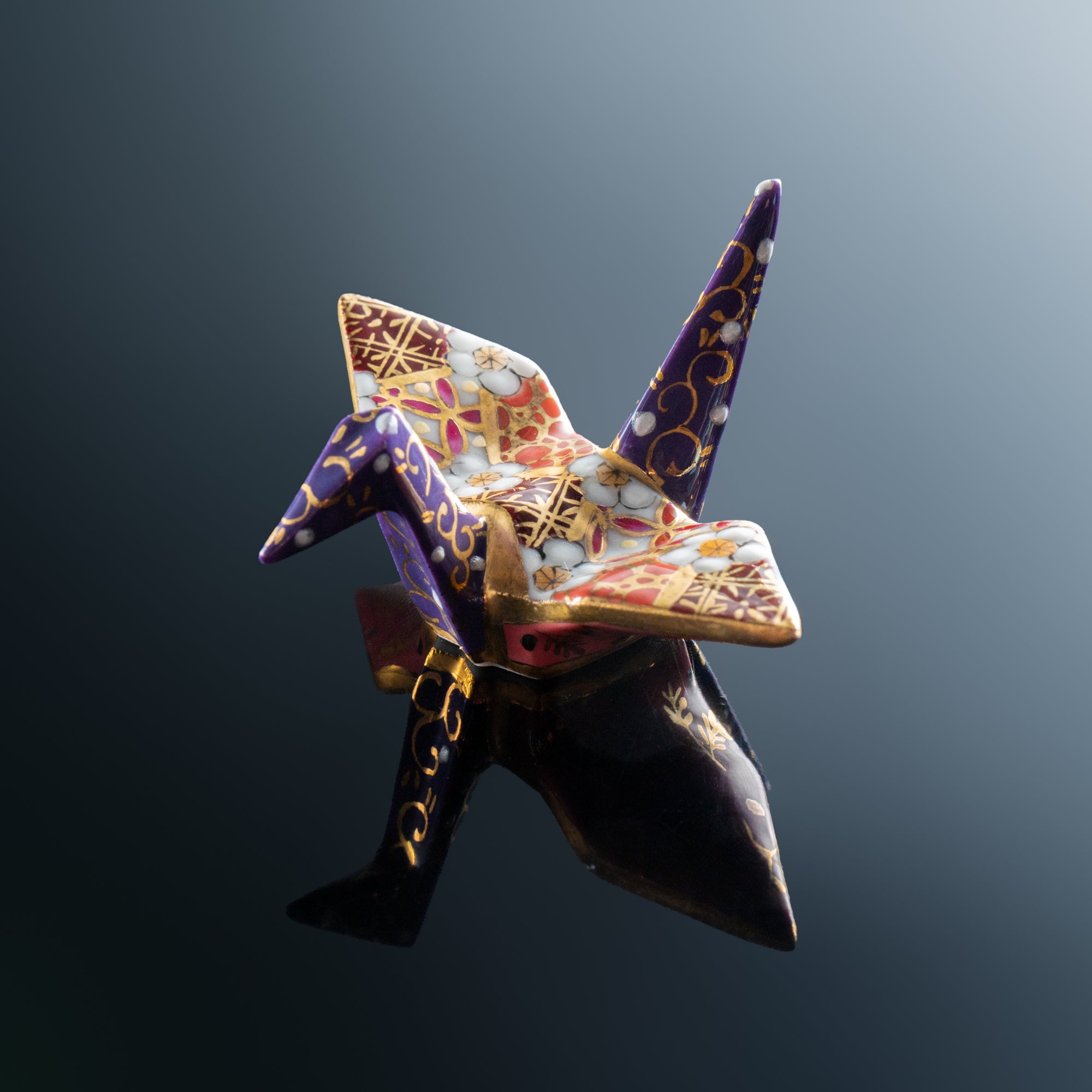

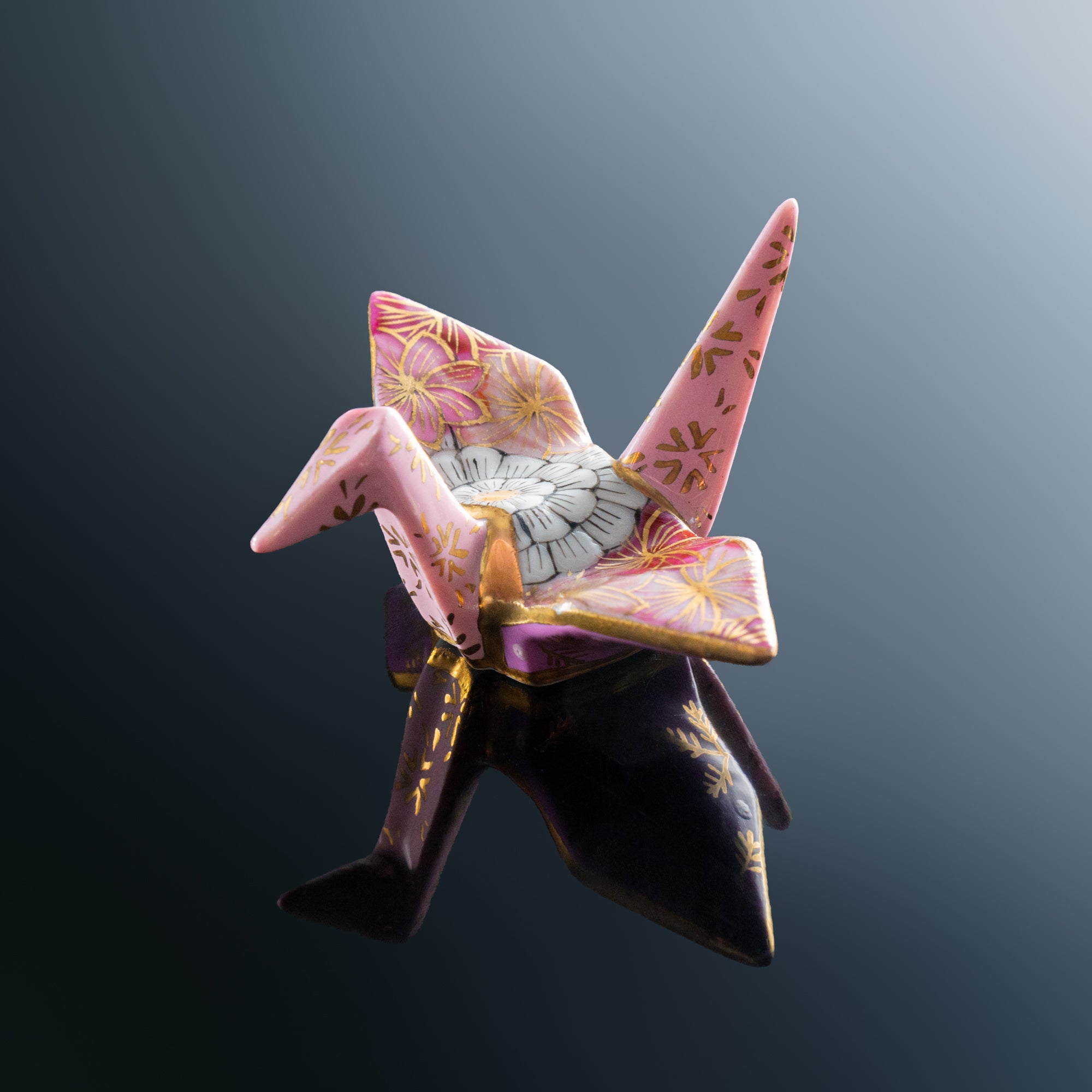
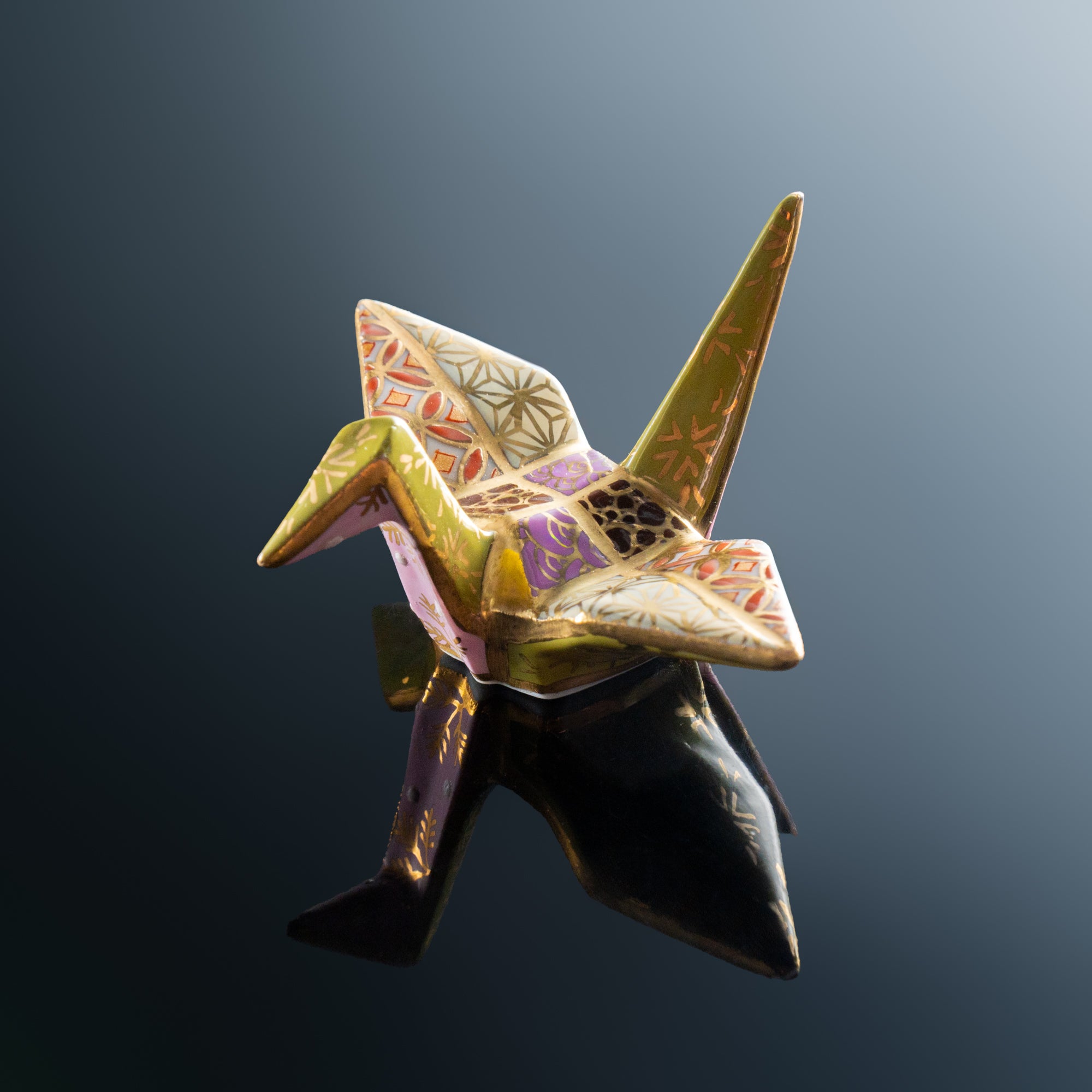

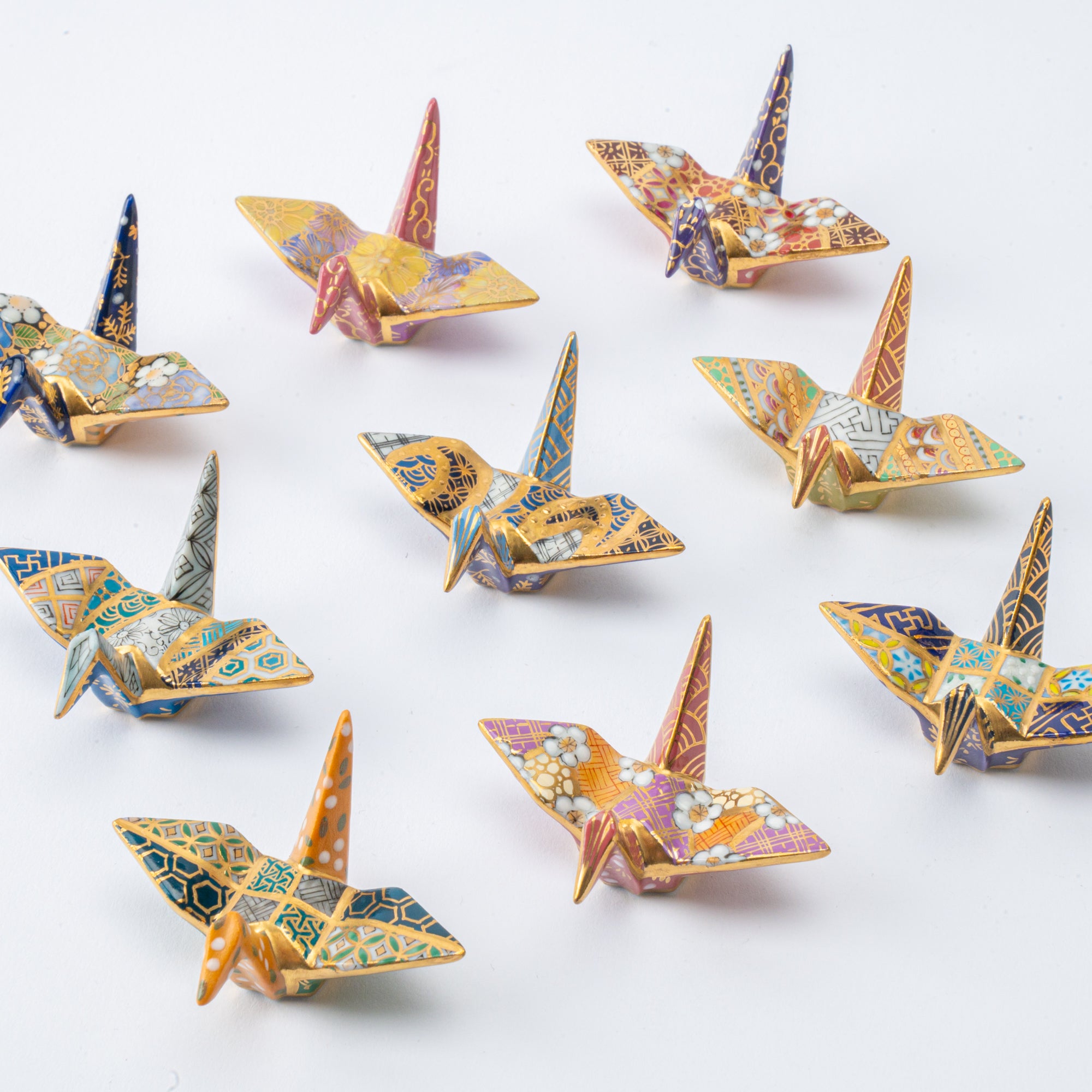
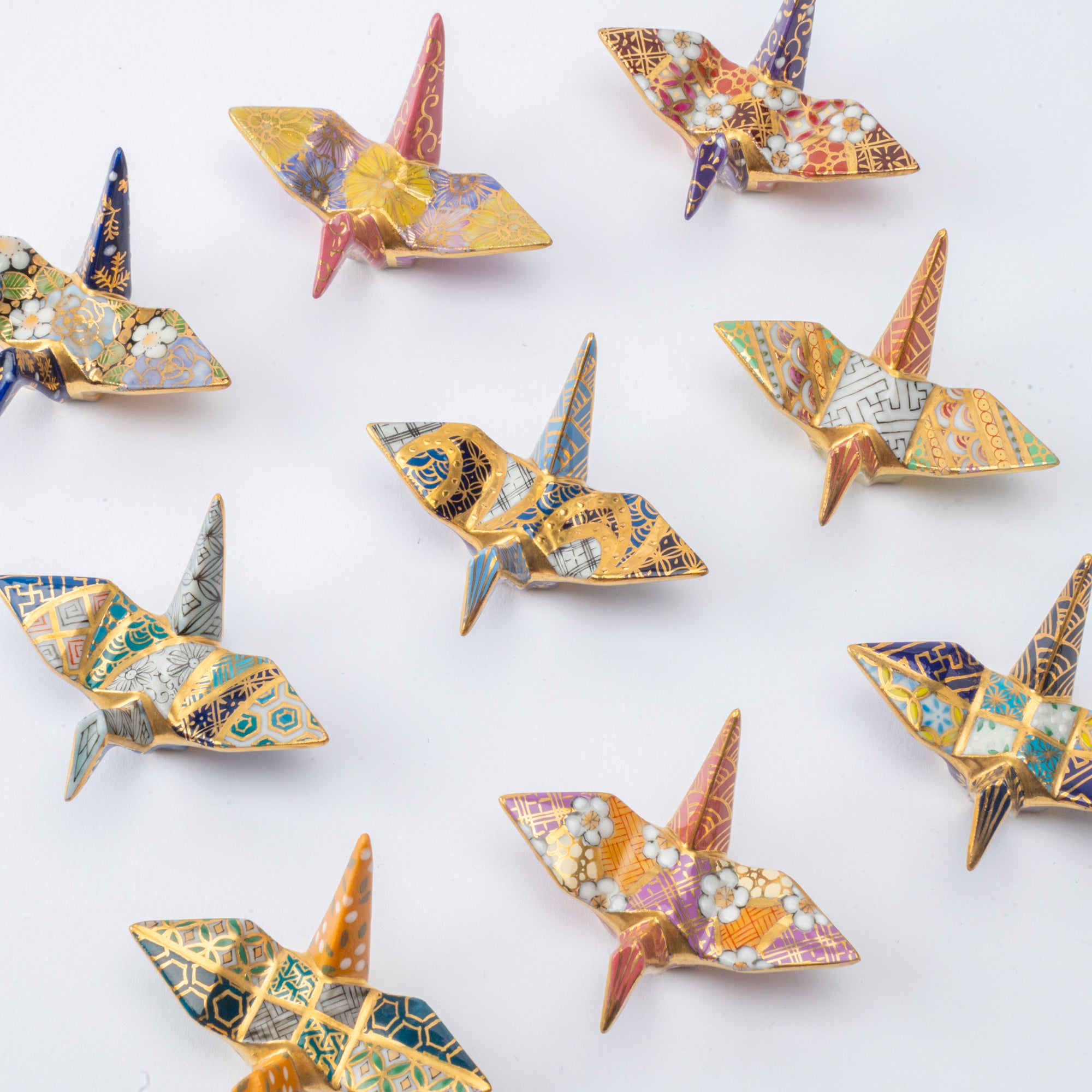
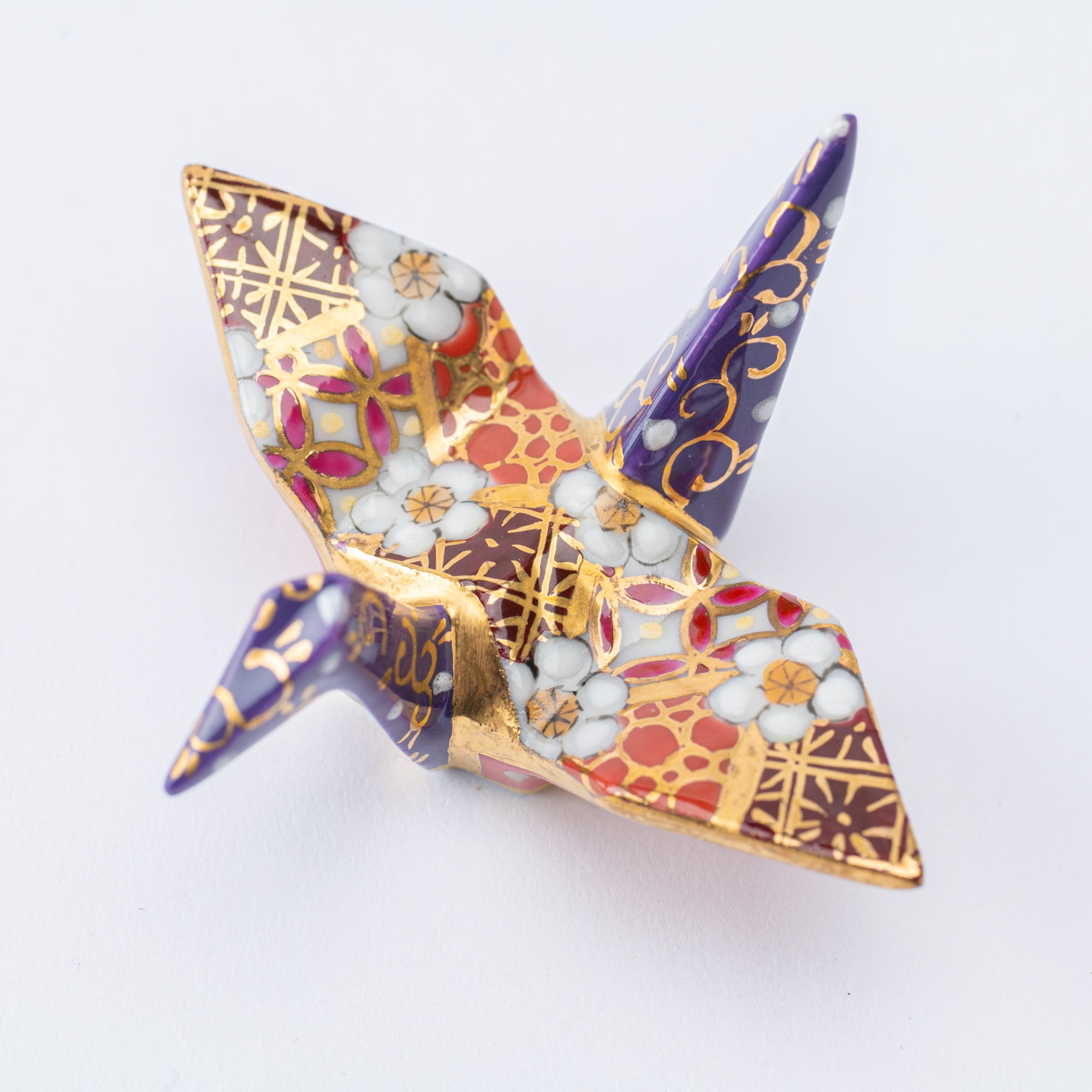
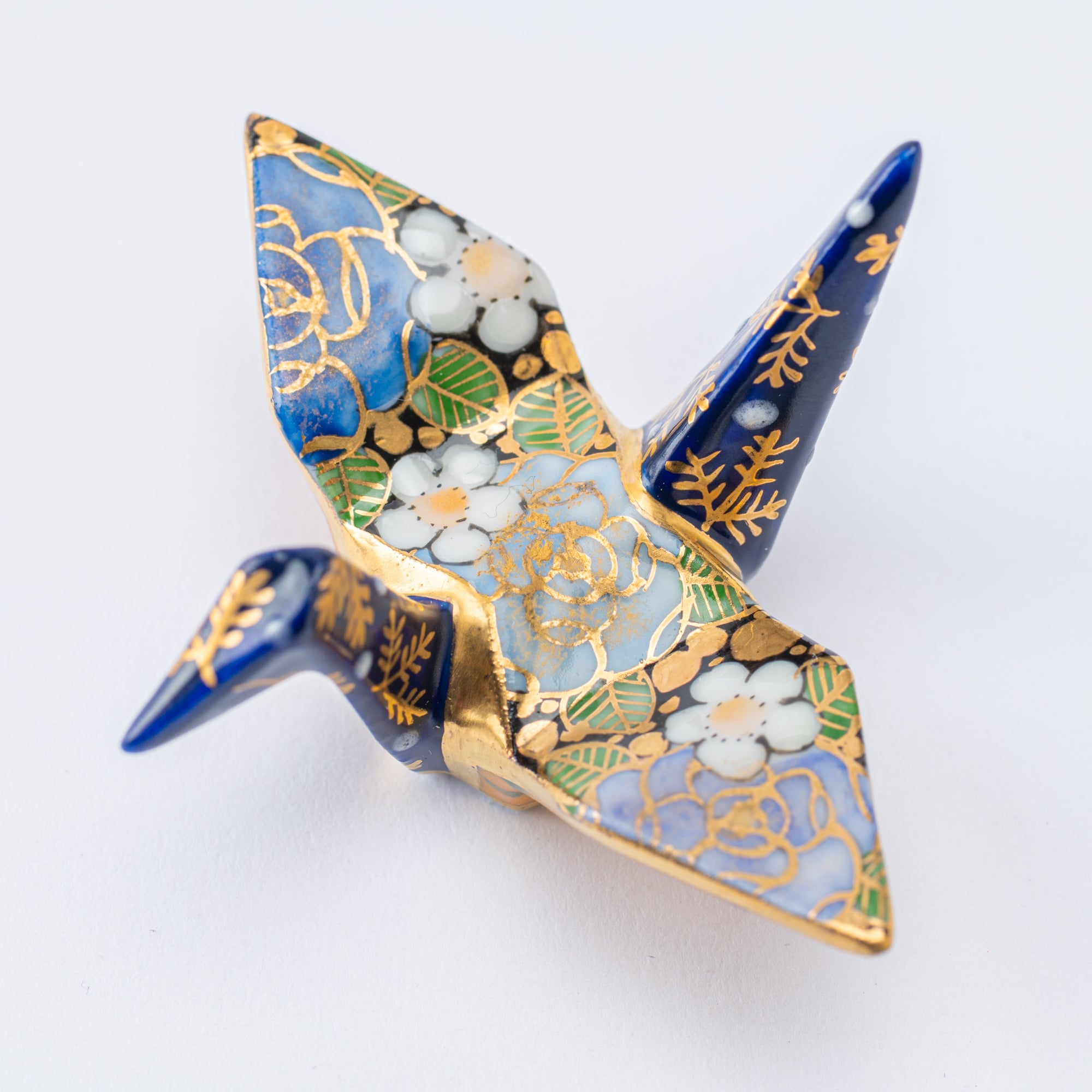
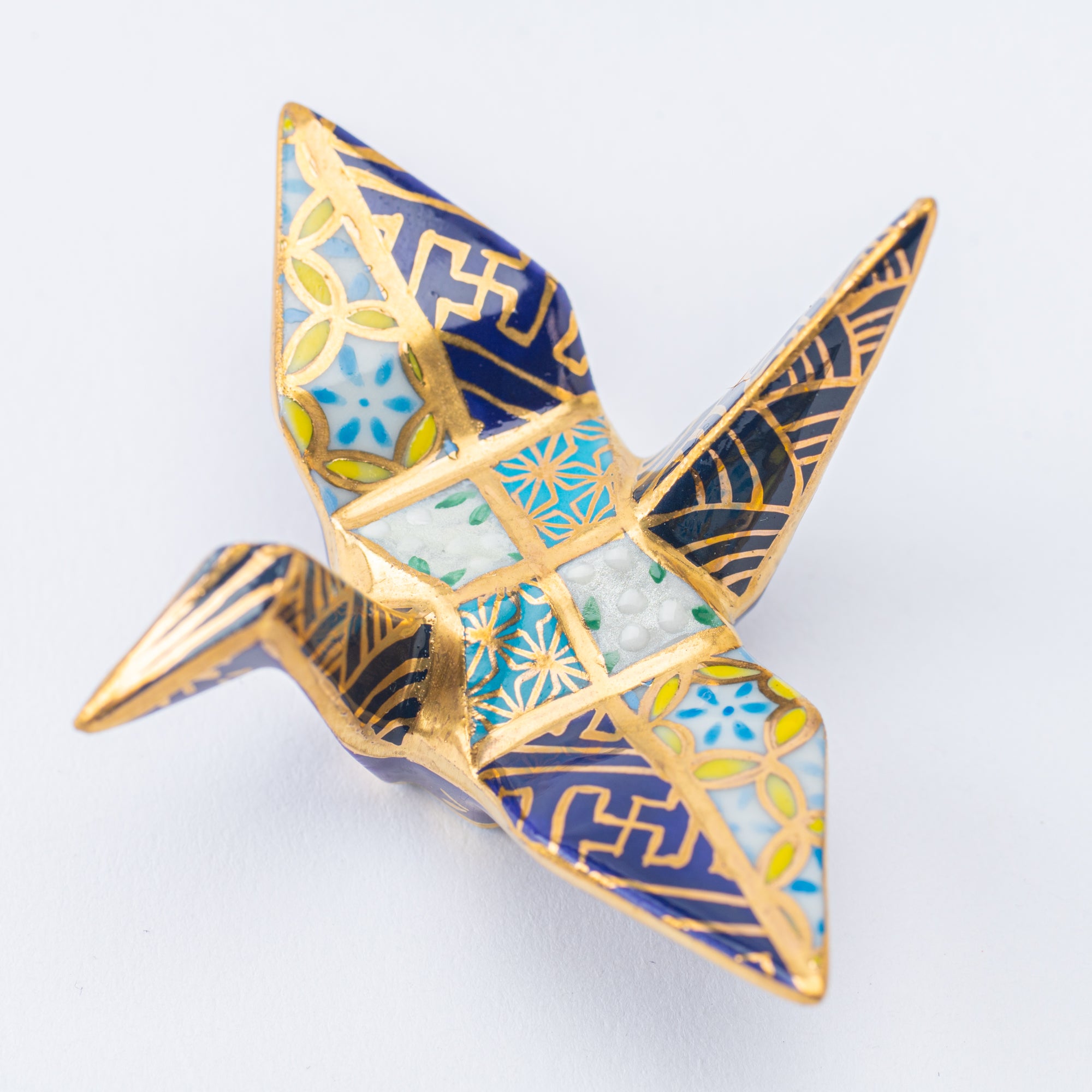
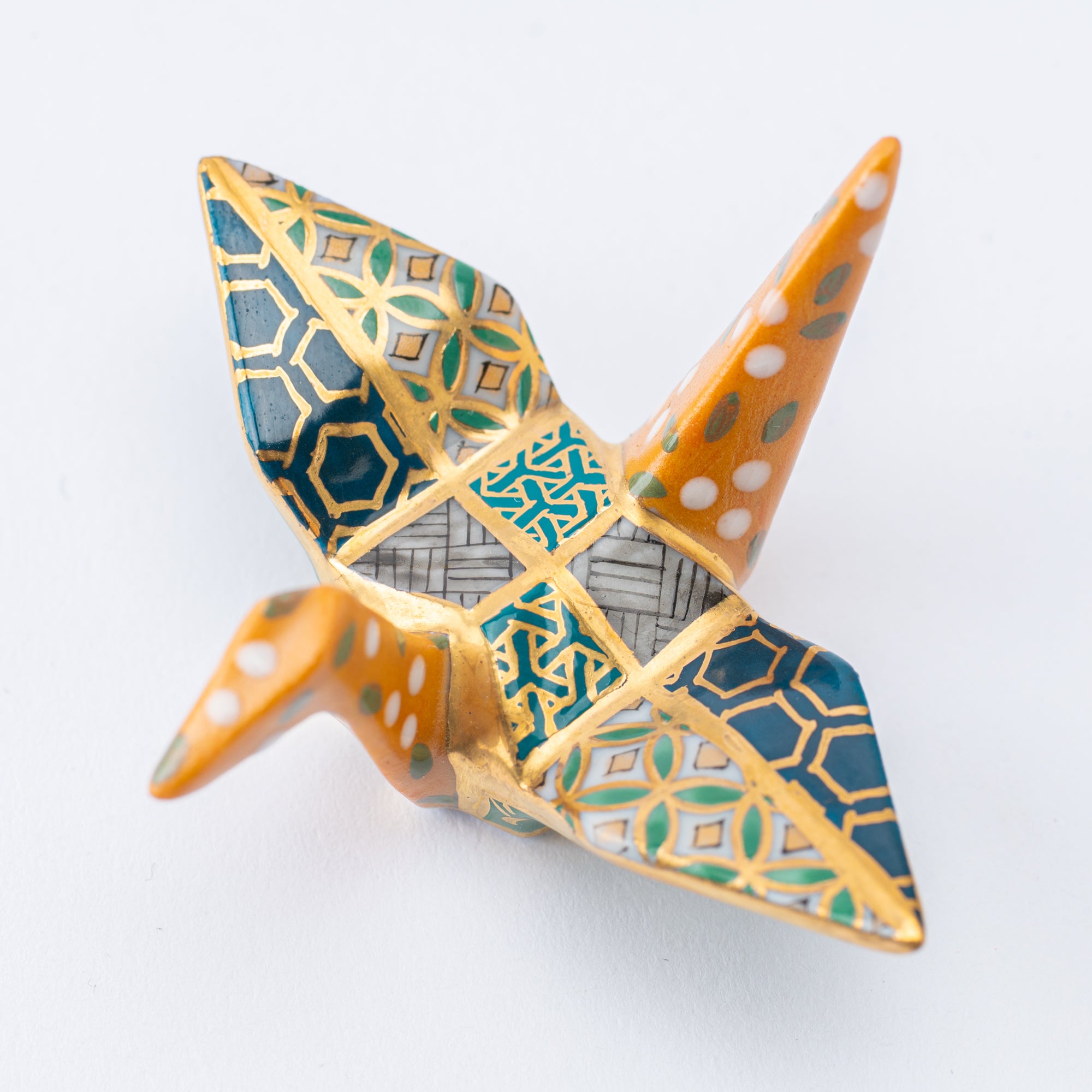
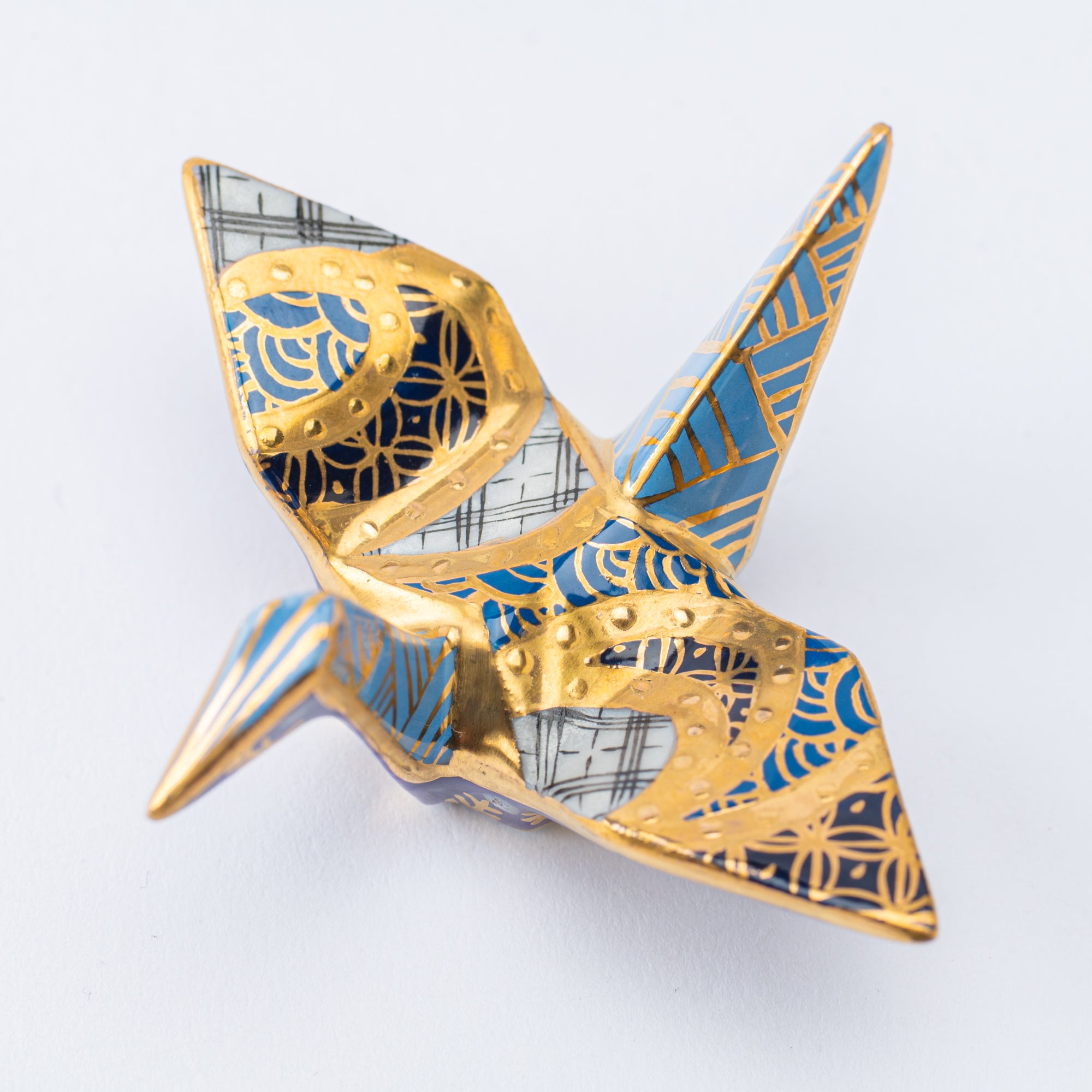
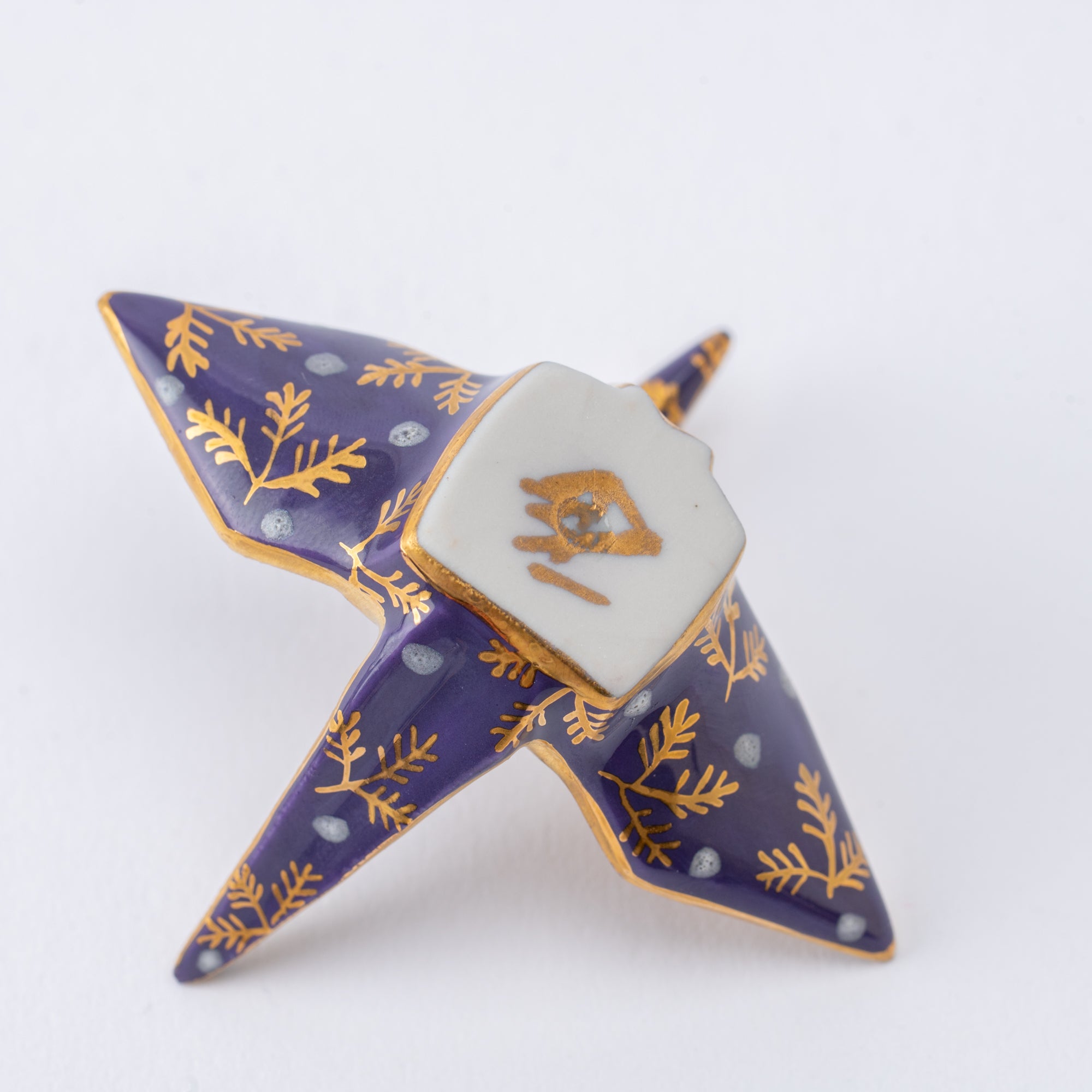
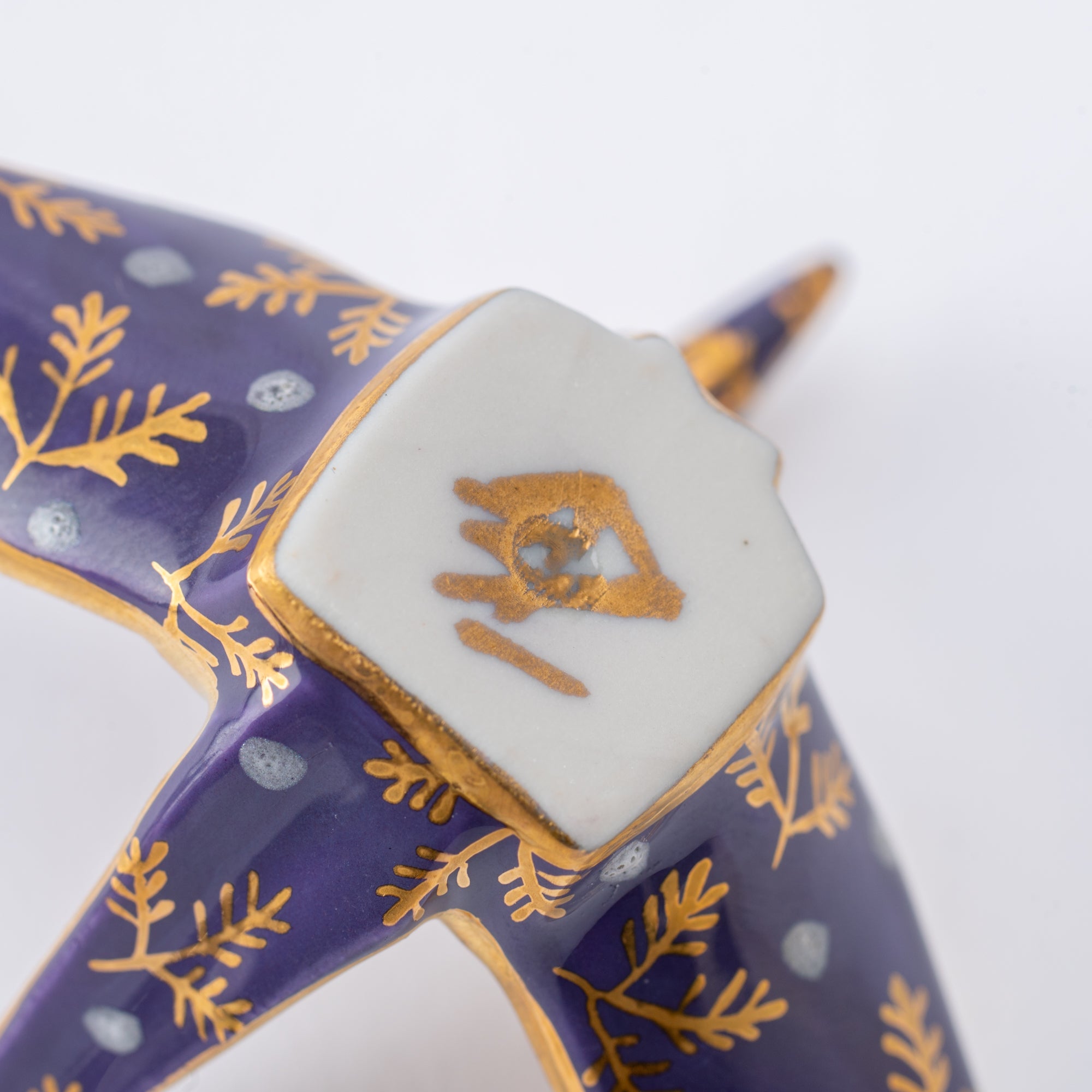
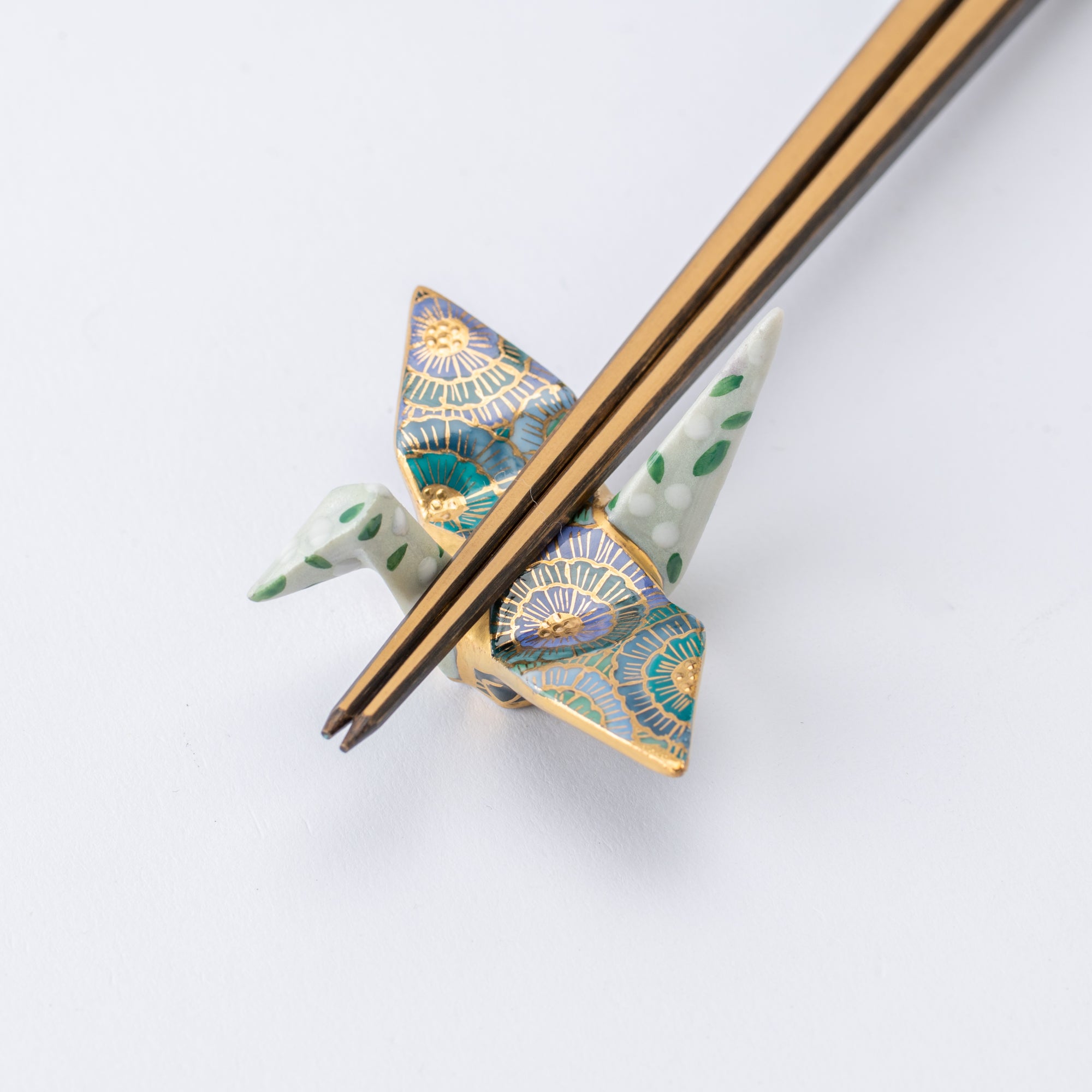
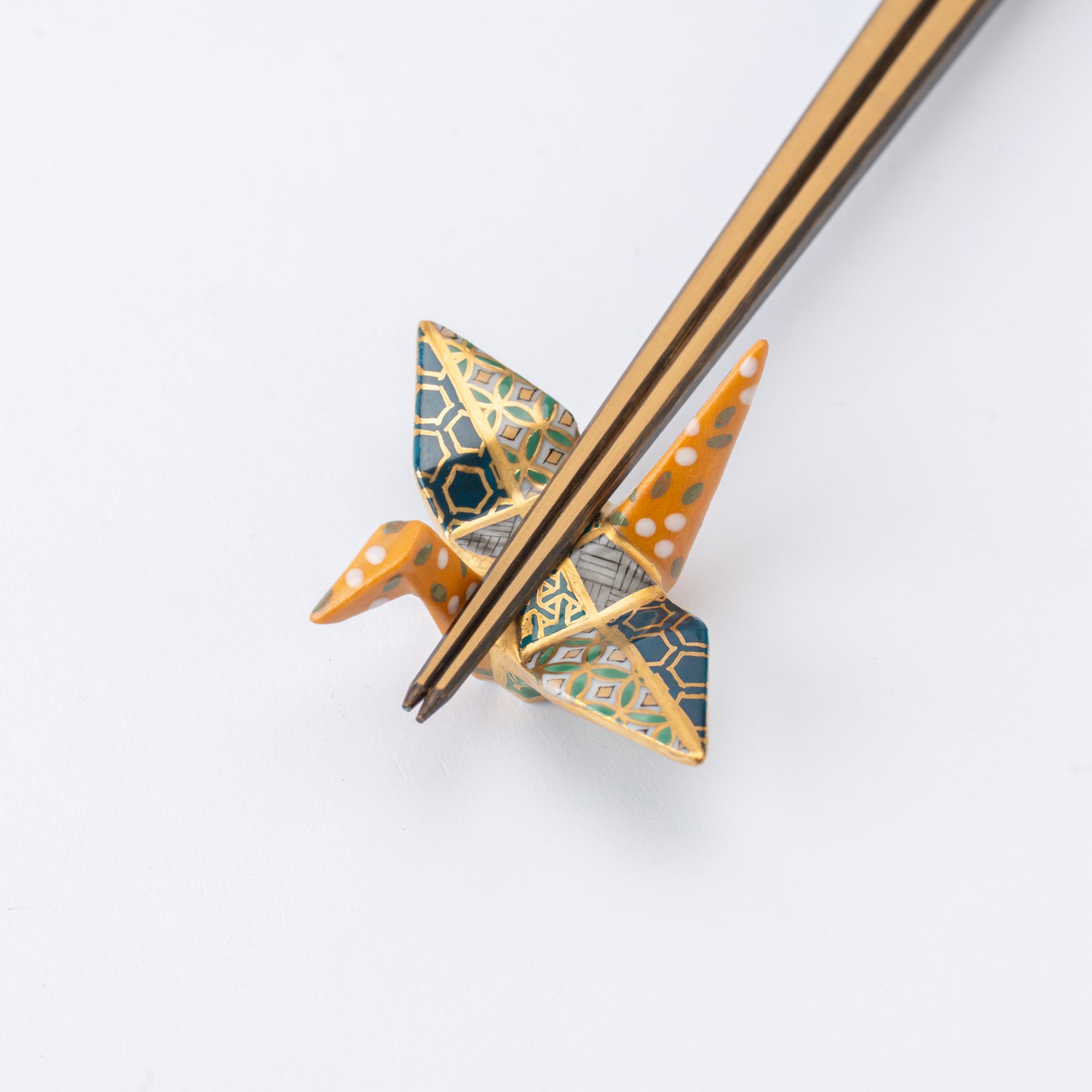
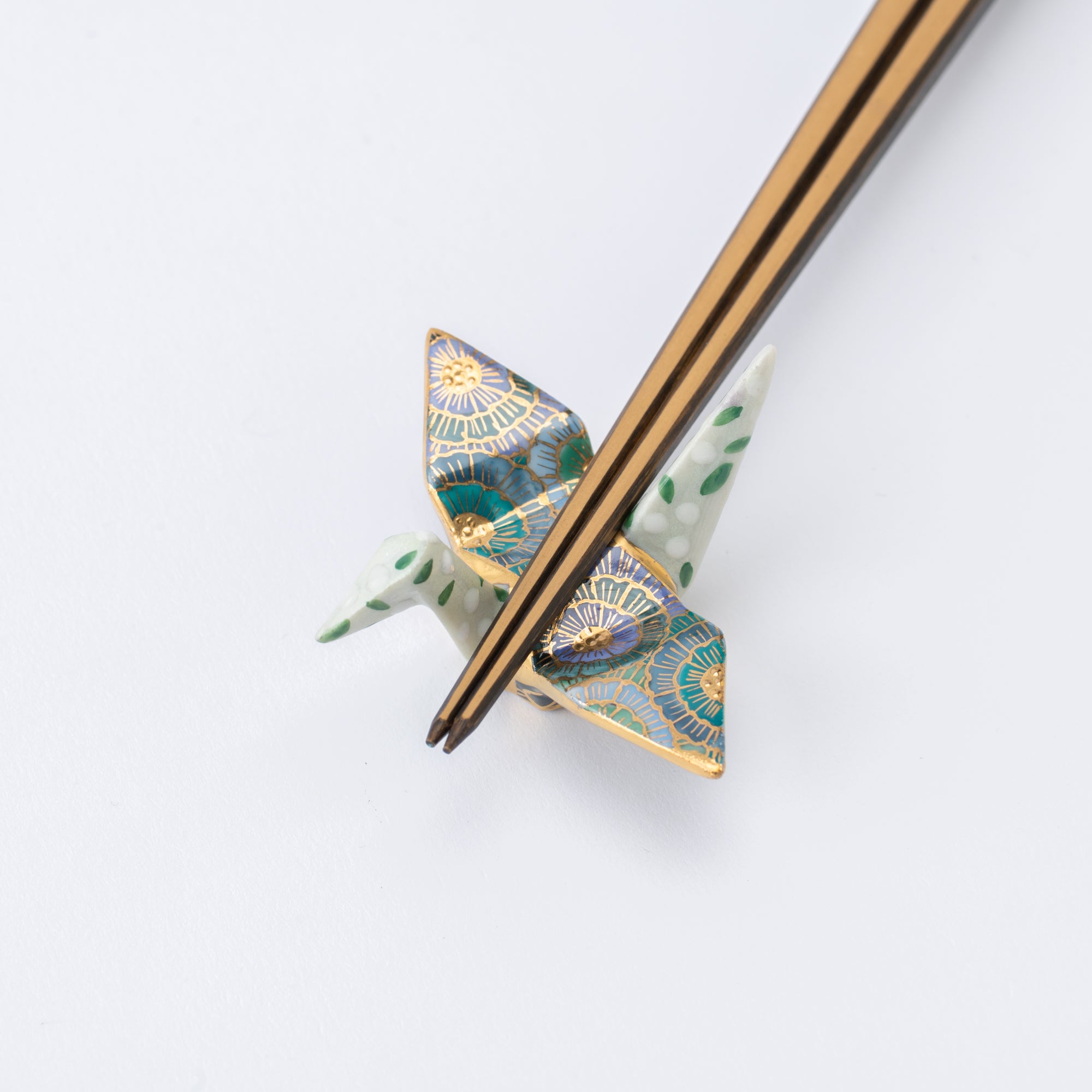
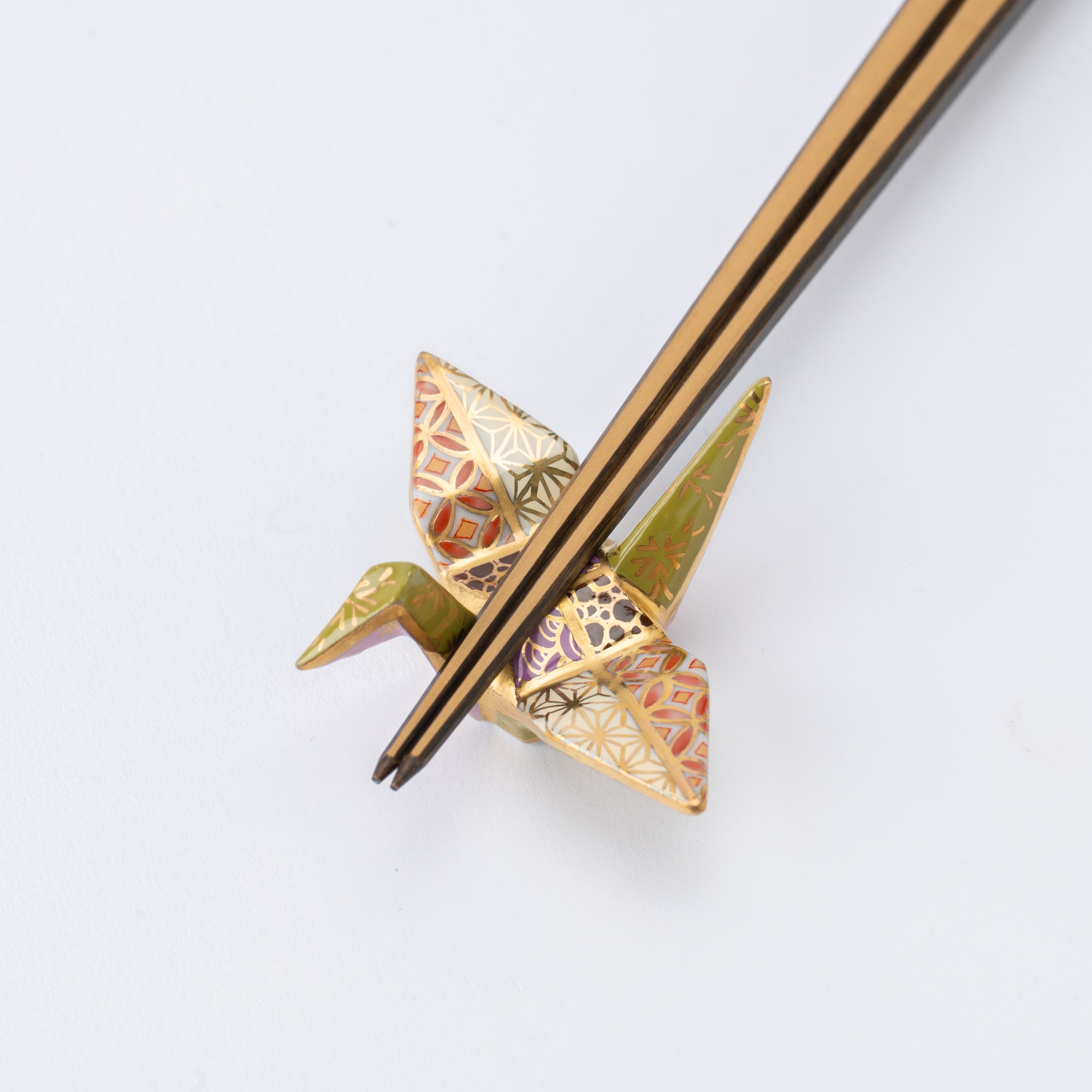
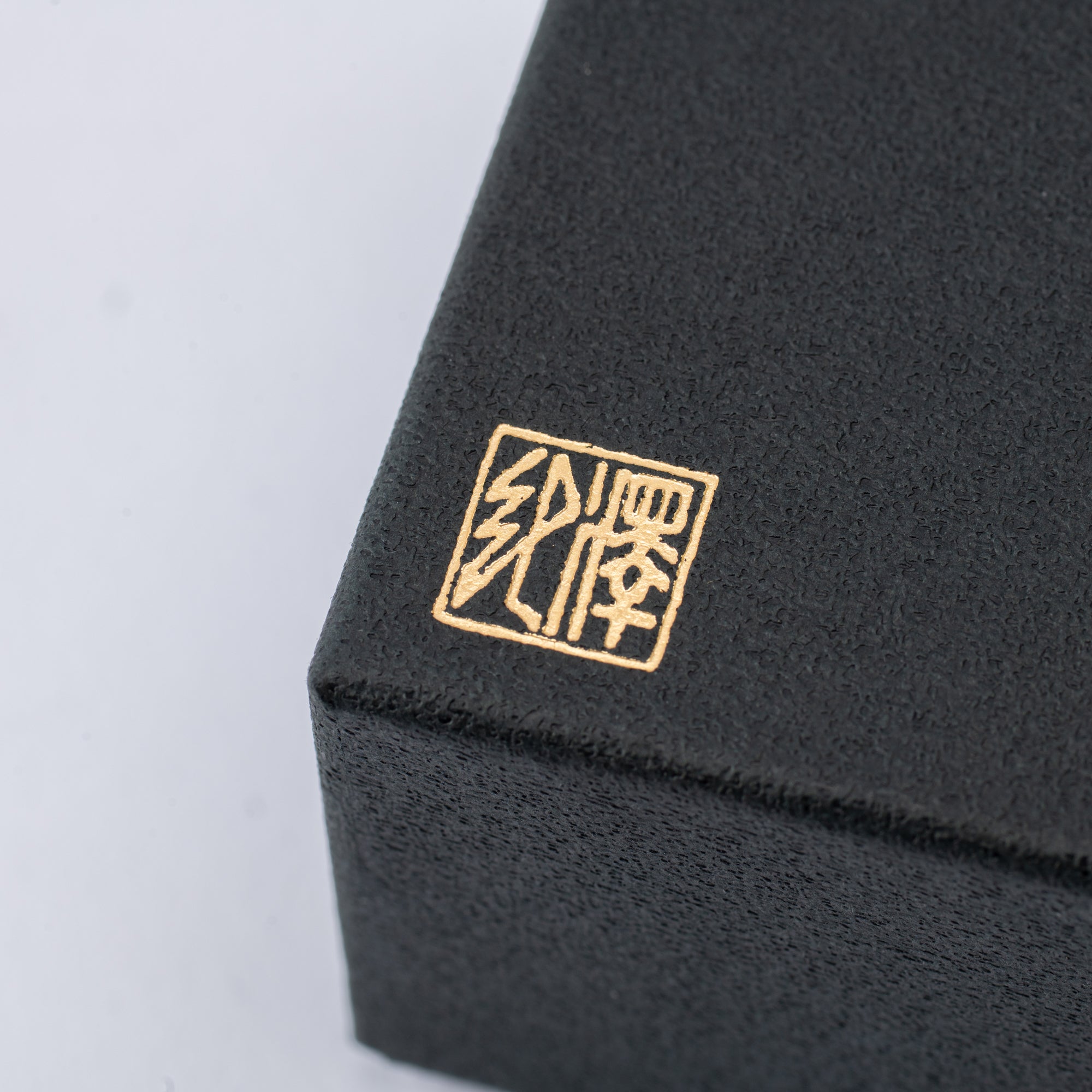
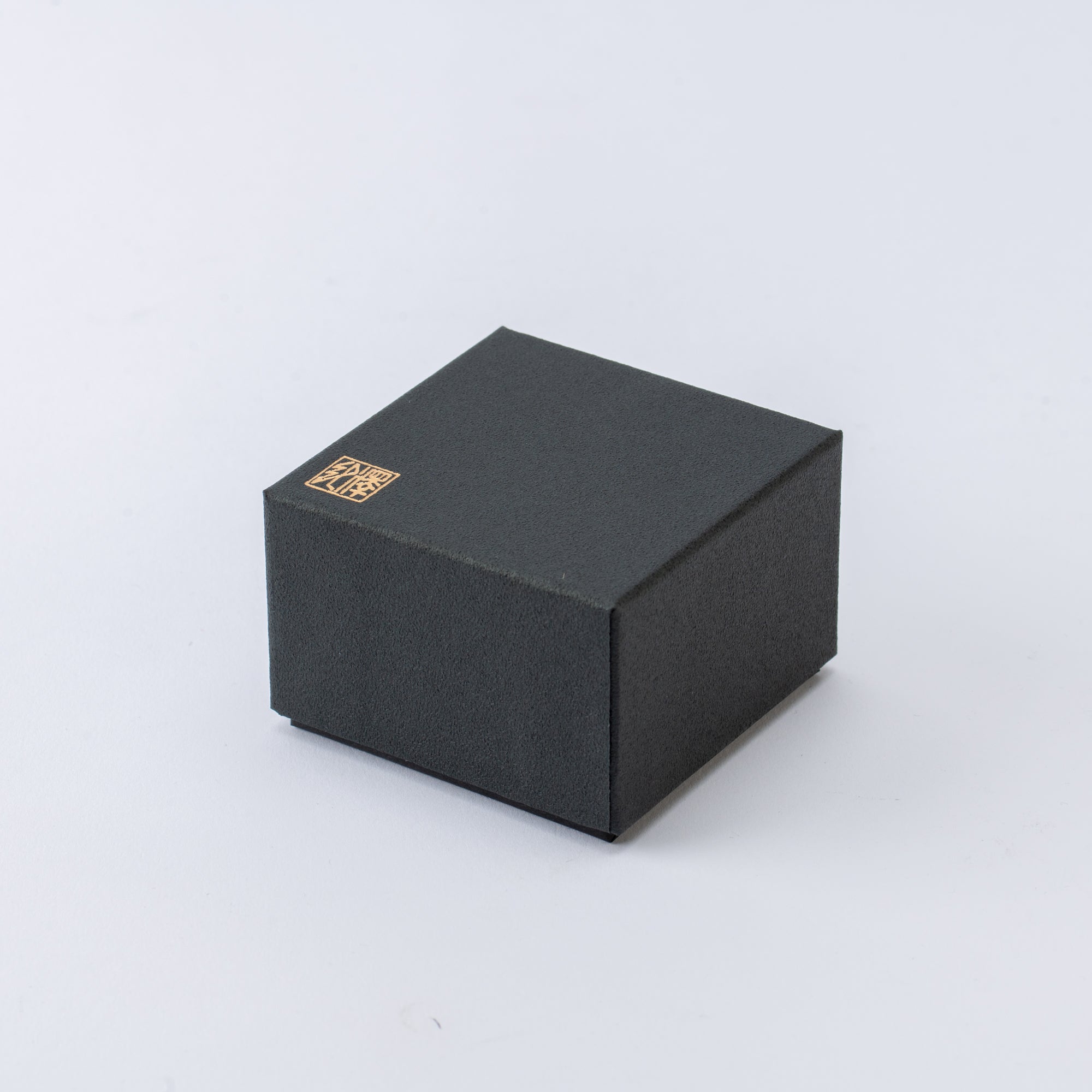
Gold-gefütterte Origami-Kranich-Essstäbchenablage
Dieses Produkt ist derzeit exklusiv in der Otonami Lounge Tokyo im 10. Stock des Bahnhofs Daimaru Tokyo erhältlich.
Diese Essstäbchenablage aus Porzellan hat die elegante Form eines Papierkranichs und ist mit präzisen Linien aus Gold und traditionellen japanischen Motiven verziert, die alle sorgfältig von erfahrenen Kunsthandwerkern handgemalt wurden. KIZAWA ist ein kleines Studio mit Sitz in Kyoto, das für die Herstellung von Keramik bekannt ist, die subtile Schönheit mit durchdachter Funktionalität verbindet. KIZAWA kreiert jedes Porzellangeschirr nicht nur als Kunstwerk, sondern als etwas, das Freude in den Alltag bringt.
In Japan gilt der Kranich seit langem als Symbol für Glück und Langlebigkeit. Seine Form, die durch die raffinierte Origami-Tradition zum Leben erweckt wurde, trägt über Generationen hinweg Bedeutung und stille Wünsche in sich. Dieses Stück fängt diesen Geist in fein bemaltem Porzellan ein – voller Bedeutung und zum Leben erweckt durch sorgfältige Handwerkskunst, die die beständige Schönheit der japanischen Kultur widerspiegelt.
EINZELHEITEN
| Quantity | 1 |
| Size | L 5.0 cm (2.0 in) x W 6.0 cm (2.4 in) x H 3.5 cm (1.4 in) |
| Weight | 17 g (0.6 oz) |
| Material | Porcelain |
| Package Type | Paper box |
| Microwave | No |
| Dishwasher | No |
Hersteller / Marke
KIZAWA ist ein in Kyoto ansässiges Studio, das sich auf handbemalte Keramik spezialisiert hat und von der Künstlerin Kinosawa geleitet wird. Das Studio ist für seine filigranen und lebendigen Designs bekannt und orientiert sich an der Idee, Kunstwerke für den Alltag zu schaffen. Jedes Werk ist exquisit und doch praktisch, mit Sorgfalt bemalt, um Freude in den Alltag zu bringen. Für jedes Stück verwendet das Studio eine andere Kombination detailreicher, handgezeichneter Muster und schafft so wahre Unikate.

Kunsthandwerk
Kyo- und Kiyomizu-Ware, zusammen als Kyo-yaki und Kiyomizu-yaki bekannt, sind berühmte Keramikstile aus Kyoto. Bekannt für ihr lebendiges Design, ihre fein geformten Formen und die Liebe zum handwerklichen Detail, spiegeln diese Waren Kyotos unverwechselbaren Sinn für Schönheit und künstlerische Raffinesse wider.
Kyo- und Kiyomizu-Ware zeichnen sich durch eine lange gepflegte Vielfalt aus und greifen auf Techniken und Stile der Töpfertraditionen Japans zurück. So entwickelte sich eine ausdrucksstarke und typisch Kyoto-Kunstform. 1977 als traditionelles japanisches Kunsthandwerk anerkannt, werden sie bis heute wegen ihrer kulturellen Tiefe und Alltagstauglichkeit geschätzt.

Optionen auswählen
About Artist
Musubi-Galerie
Seit seiner Gründung Musubi Kiln hat sich zum Ziel gesetzt, der Welt die feinsten traditionellen Handwerkskünste von Meistern aus ganz Japan vorzustellen.
Hier in der Galerie präsentieren wir Ihnen die höchste Stufe traditioneller Techniken, die über Generationen weitergegeben wurden. Entdecken Sie Werke von Meistern, die diese Methoden nicht nur perfektioniert, sondern mit ihrer Fantasie das Handwerk noch weiter verbessert haben.
Einige dieser Meister wurden sogar zu „Lebenden Nationalschätzen“ ernannt. Dieser Titel wurde ihnen von der japanischen Regierung verliehen, um ihren Beitrag zum Kunsthandwerk und zur Kultur offiziell anzuerkennen. Dadurch wurde ihr Erbe gefestigt und sie wurden zu einem wichtigen Teil der Kunstgeschichte.
Jedes Stück wird über viele Monate hinweg sorgfältig von Hand gefertigt, um einen zeitlosen Schatz zu schaffen, der seinesgleichen sucht. Und wenn es bei Ihnen zu Hause steht, werden auch Sie Teil dieser Geschichte.
Willkommen in der Galerie. Schauen Sie sich in Ruhe um.
